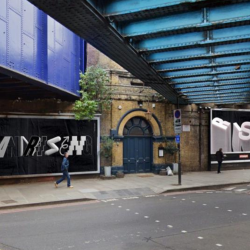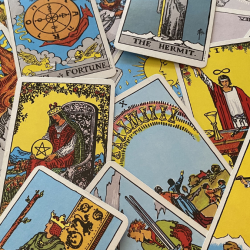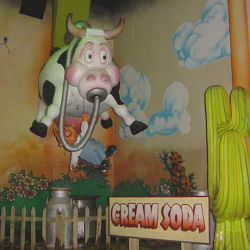The science of awe
The Northern Lights illuminating our skies; Simone Biles revealing new levels of human capability at the Olympics; extraordinary acts of bravery and communal kindness in the wake of the Southport murders; the small green shoots of hope at the base of the felled Sycamore Gap tree. These have the power to induce ‘awe’ in all of us. They unite people in a shared emotional response that enhances our happiness and enlightenment. The science of awe has much to teach brands and how they can drive positive impact.
Dacher Keltner, professor of psychology at the University of California, Berkeley is the author of Awe: The New Science of Everyday Wonder and How It Can Transform Your Life. He describes awe as: ‘The feeling of being in the presence of something vast that transcends your current understanding of the world’. If awe is so fundamental to how we experience the world on a collective and individual level, and so important for our personal wellbeing, how, I wondered, can brands harness the power of awe to better connect with consumers? Significantly, Keltner identifies where we find awe, providing a route map for those of us who believe that inspiring awe in consumers can help guide the future of brand design.
A route map for awe — moral beauty in top spot
Keltner cites ‘eight wonders of life’ where we find awe, but that the highest awe quotient is found in ‘the moral beauty of others’ (i.e., acts of kindness, sacrifice and compassion). This directs us to where brands should focus (i.e., being led by purpose, making a positive impact and taking meaningful action so as to deliver for the collective good of people and planet). This means focusing on brand storytelling and brand story doing, inspiring consumers with meaningful acts of kindness to the world. This conclusion is reinforced by a recent study by Portsmouth University showing that consumers expect brands to behave both morally and ethically, and provides new tools to measure how they judge that moral behaviour. Selena Gomez’s Rare Beauty is a great example of a brand committing to story doing. It channels its seasonal advertising spend to the Rare Impact Fund, targeting raising over $100 million to enhance access to mental health services for youth worldwide. This is an act of kindness and compassion to unlock awe not just for its consumers, but all of us.
Coming second — shared experiences
Ranking second as a place where we find awe is in ‘collective effervescence’ (i.e., in the collective rites, rituals and joyous ceremony we share with others). Brands have always wanted to create communities, primarily in order to commoditise them. But Keltner’s insight means we should be creating true communities that are brought together physically in shared expressions of joy, rather than just being digitally connected in purchasing preference.
If we can combine these episodic events of collective effervescence with acts of moral beauty, we can build brand communities that want to effect positive impact, not just effect tribal image. This means re-imagining the brand as the experience and inspiring collective action through a collective sense of awe. REI (Recreational Equipment Inc.) brings together communities in environmental stewardship and outdoor recreation, with clean up events and collective campaigning to protect nature. This is collective effervescence unlocking awe in its loyal consumers base while doing good; a double whammy.
In third place — awesome nature
Keltner’s third place of awe is in the ‘unexplainable beauty of nature’ and how immersion in nature fills us with feelings of connectedness that raise our shared consciousness. Positivity and wellbeing come when we experience the serenity and wonder of nature, be it in the wilderness or catching the light shimmering through the trees on a morning commute.
Brands can seek to capture the awe-inspiring beauty of nature in their campaigns with an expression of nature that is relevant to their product and consumers. As we move from the Age of Information to the Age of Imagination, at the very least brands can put beauty back at the heart of brand intent, raising the ambition of brand communications beyond the expected, iterative and transactional, and challenge us to ask higher questions of ourselves, feel more inter-dependent and unified in purpose.
A case study in brand Awe
Decathlon-owned mountaineering brand Simond is seeking to inspire awe in each of these ways. Born in the French Alps, it is witnessing first-hand the rapid decline of the glaciers and understands its duty to lessen its impact on the natural environment. This moral purpose informs everything the brand stands for and everything its community holds precious.
Simond is adopting regenerative brand behaviours, shifting from a product focus to a knowledge and experience-based model. This means product repair and reuse and fewer new products, and an emphasis on mountaineering education and support such as survival courses, nutritional advice, insurance products, etc., all designed to preserve the majesty and beauty of Mont Blanc for future generations to find awe in.
The brand also puts community at the heart of its DNA, bringing an Alpinist collective together in real-life activities, to ‘do the right thing’, practise their sport by fair means, and preserve the entity that brand and community find awe in.
If protecting its Alpine home is Simond’s core purpose, it follows that the brand puts the epic and sacred beauty of the mountains totemically front and centre of all its communications, both to celebrate it and remind consumers what’s at stake. This way it can inspire more people to experience it in the right way, and inspire more positive impact.
For Simond, a celebration of sacred beauty and brand moral purpose combine to drive respectful and impactful communal behaviour, and all of it is awe-inspiring.
Where next for brand and brand design?
At FreshBritain we are at the forefront of regenerative brand design to drive positive brand impact, and we know it’s not always easy. Can we afford to do the right thing? Is positive impact compatible with positive growth?
By revealing the power of awe, and where to find it, Keltner reminds us to stay on track. If consumers find awe in moral acts of kindness, collective action and sacred beauty, then this is precisely what regenerative brand design delivers; positively connecting consumers, with no false alternative between positive impact and positive growth.
Until recently, brand design has incited behaviours driving faster consumption cycles, fuelling the climate crisis and creating a cult of individualism. But if awe is pro-collectivism and a powerful force making people feel part of something bigger than all of us, then the ego and default-self naturally fall away.
Perhaps the most compelling case for brands to adopt our awe route map is to bring us all together again, to be part of something bigger and more important, to spark conversations and challenge societal conventions. If brands seek to create more awe in people, maybe we could all be equal in creating a positive impact.
Featured image: Selena Gomez, Rare Trust Fund




































